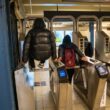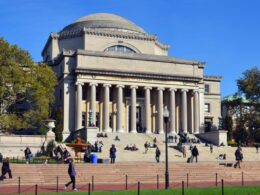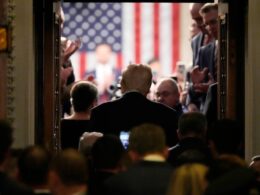“It’s working!” That’s the refrain about congestion pricing. Traffic is down, ridership is up, and the MTA raised $100 million from the program in just two months. To advocates, congestion pricing is a resounding success: it funds the MTA, incentivizes transit use, and reduces time in traffic.
But not everyone is on board. President Trump and Transportation Secretary Sean Duffy are skeptical of congestion pricing. While most attention has been on the argument that the program is “class warfare,” it was the president’s comments that exposed the biggest political vulnerability. The president noted that the MTA loses more money to fare and toll evaders than the revenue expected from congestion pricing. “You feel like a sucker if you pay the fare,” Trump said.
The president isn’t the only one to single out fare evasion. A Blue Ribbon Panel stated that fare evasion reinforces the perception that there are no rules, where each incident normalizes misconduct and encourages others to do the same. MTA Chairman Janno Lieber called fare evasion the MTA’s “No. 1 existential threat.”
But compared to the enthusiastic support for congestion pricing — rallies, opinion pieces, and social media campaigns — efforts to combat fare evasion have been met with relative silence from advocates. Since 2018, when the Manhattan DA decided he would no longer prosecute fare evasion, it has steadily worsened, later skyrocketing over the pandemic. Yet, it attracts nowhere near the organized attention that congestion pricing does.
Subway crime is not as bad as it was 40 years ago, but perception matters. According to an MTA survey, fewer than half of riders felt safe, down from 65% before the pandemic. In response, Gov. Hochul flooded the system with police officers, installed thousands of new cameras, and ramped up enforcement. While not receiving the same fanfare as congestion pricing, these efforts are working. Subway fare evasion is down nearly 30%, and subway crime fell to the second-lowest level in 27 years earlier this year.
When basic rules are blatantly ignored — from people jumping over turnstiles, slipping through exit gates, or boarding buses without paying — it creates a perception that larger rules don’t matter. For those who don’t regularly use the MTA, this perception is amplified by media coverage of fights, stabbings, and other acts of violence circulating on social media. We have all noticed riders pressed against the wall, anxious about becoming the next victim pushed into an oncoming train.
If politics is downstream of culture, the perception that there are no rules has political consequences. In March, Duffy warned the MTA of impending penalties if quality of life continued to deteriorate. By downplaying riders’ fears, advocates have allowed the MTA to be framed as a lawless underground. We undermine our case for increased funding if we fail to acknowledge that everyone who uses the system should feel safe and contribute their fair share.
When we fail to enforce basic rules, such as on the system that New Yorkers use the most, we normalize behaviors that we would never accept for ourselves, our workplaces, or our children. Some want to make the system free, arguing that it would reduce fare-related assaults. Implying that some can follow rules while others have no agency to do the same is nothing but the soft bigotry of low expectations and an abdication of a collective responsibility that can easily pervade the rest of the city.
Fare evasion doesn’t make someone a criminal, but someone who is comfortable breaking larger rules doesn’t sweat the smaller ones. What better way to send a message that there are rules on the subway or bus than by enforcing them the moment someone walks through the MTA’s front door?
As officials finalize the state’s budget, they are looking to fill a $33 billion budget gap in the MTA’s capital program. Up for consideration is raising taxes. But left out is an effort to clamp down on those who steal from the system that benefits everyone. A dynamic where some pay more while others pay nothing will never get the public buy-in we need for the MTA. But creating a culture where everyone pays their fare and abides by basic rules isn’t just better for riders, it’s also good politics.
The best time for advocates to have used their collective voice to hold accountable those who treat the MTA as a free shuttle service, preventing the loss of hundreds of millions of dollars, was back in 2018.
The second-best time is now.
Garten, a former senior executive at the MTA, Port Authority, and RXR, is a consultant and writer.








